#de mayrit a madrid
Text
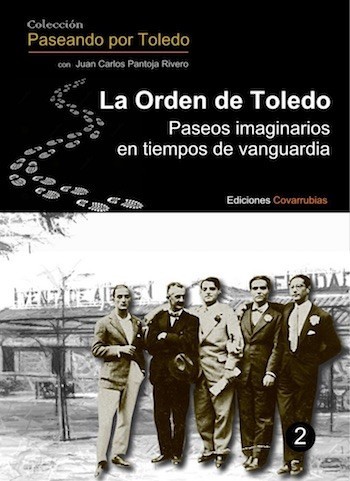


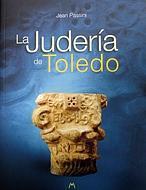
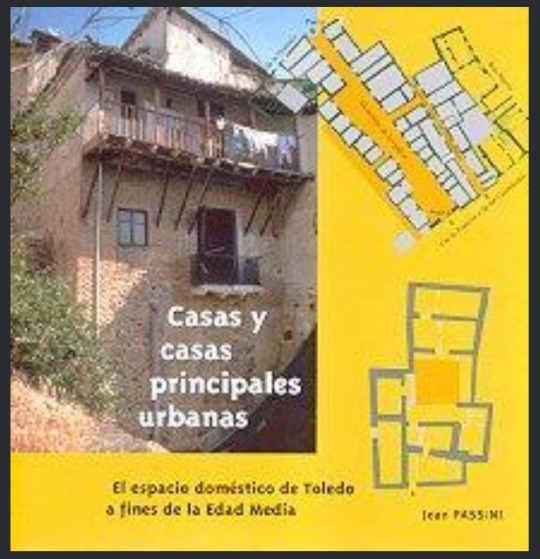


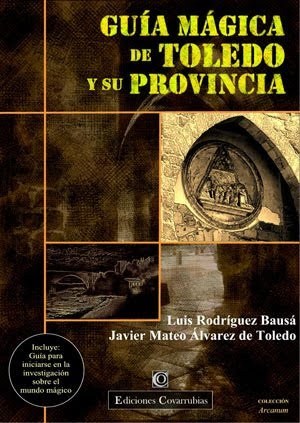


Propaganda
1. La Orden de Toledo: Paseos imaginarios en tiempos de vanguardia (The Order of Toledo: Imaginary walks in avant-garde times)
Author: Pantoja Rivero, Juan Carlos
Editorial: Covarrubias Ediciones
Edition: 2019
Synopsis: The Order of Toledo was, above all, an avant-garde fantasy of the brilliant film director Luis Buñuel, who knew how to infect his friends from the Generation of '27 to the Spanish intellectuality of the first third of the 20th century. Together, they dedicated themselves to living Toledo as if it were the great stage of a surrealist montage, in an artistic (or anti-artistic and irational) contrast with the monumentality and historical past of the old dead city.
(Well, in my blog I have been making posts about The Order of Toledo and the book is a valuable source)
2. Toledo: La ciudad de los muertos (Toledo: The city of the dead)
Author: Leblic García, Ventura
Editorial: Covarrubias Ediciones
Edition: 2013
Synopsis: Toledo. A large historical necropolis where Carpetans, Romans, Visigoths, Muslims, Jews and Christians rest...their rites around death, beliefs, customs, evolution of the cemetery spaces...
(I have posted the scans of the first pages of this books and I'm planning to keep on posting them but I wanted to know if you want scans from another book)
3. De Mayrit a Madrid: Madrid y los árabes del siglo IX al siglo XXI (From Mayrit to Madrid: Madrid and the Arabs from the 9th century to the 21st century)
Editors: Madrid. Casa Árabe e Instituto Internacional de Estudios Árabes y del Mundo Musulmán ; Barcelona ; Madrid: Lunwerg
Edition: 2011
Synopsis: This work deals with the Arab-Islamic past (Andalusian, Mudejar and Moorish) of Madrid and its forgotten heritage since it is the only European capital whose origins and name are linked to Arabic.
Revisiting that past and making it known is the objective of this work, which wants to rescue knowledge of a relationship between Madrid and the Arabs that does not end in the Middle Ages, since the town and court maintained various links with what was over time. Arab through diplomatic delegations, Arab figures welcomed by the city, valuable collections of manuscripts and numismatics, a romantic architectural taste that seeded the city with unique neo-Islamic buildings or Hispano-Arab scientific and cultural institutions. And, finally, the cosmopolitan and intercultural reconversion of the city has made it the recipient of a new Arab and Muslim immigration that once again gives human visibility to this relationship between Madrid and the Arab.
4. La Judería de Toledo (The Jewish Quarter of Toledo)
Author: Passini, Jean
Editorial: Ediciones del Sofer
Edition: 2014
Synopsis: The work reveals the vestiges of the areas of medieval Toledo Jewry and its history. It collects a topographical reading of its evolution and offers the main elements through maps, plans and high-quality color photographs.
5. Casas y casas principales urbanas : el espacio doméstico de Toledo a fines de la Edad Media (Houses and main urban houses: the domestic space of Toledo at the end of the Middle Ages)
Author: Passini, Jean.
Editor: Toledo. Universidad de Castilla-La Mancha
Edition: 2004
Synopsis: This work is an extension of previous research on different districts, and seeks, for the city as a whole, to “understand the genesis of medieval urban space, to follow its transformations and successive reappropriations” , mainly with the aim of understanding, for one of the ancient provincial capitals of al-Andalus, the modalities of the transition from the Muslim city of the end of the eleventh century (time of its occupation by the Christians) to the Castilian city of the end of the Middle Ages. The main documentary basis of the work is a very important and very detailed inventory of the real estate of the Cathedral Chapter, an inventory carried out in 1491-1492, which covers a considerable heritage of 557 various buildings located in 64 sites or districts. The identification and location of houses, shops, mesones or fondouks and other urban buildings, often difficult on the current plot, has however resulted in the careful study of more than half of these old buildings. The systematic comparison of the text from the end of the Middle Ages with the remains still visible above ground or underground (and this very meticulous and patient work in the cellars of current Toledan houses is one of the great originalities of the research of Jean Passini) gave the results which are presented in this latest publication.
6. España medieval : el origen de las ciudades (Medieval Spain: the origin of the cities)
Authors: Novoa Portela, Feliciano; Villalba Ruiz de Toledo, F. Javier
Editors: Barcelona ; Madrid : Lunwerg, D.L.
Edition: 2012
Synopsis: A fascinating essay that will teach us to look at and understand our cities better. In the pages of this essay we will analyze the Roman origins, the Islamic, Christian and European influences to discover the cultural melting pot that marks the Spanish urban legacy, without forgetting some disappeared cities that tell us their history through archaeological remains.
7. Valle-Inclán y el insólito caso del hombre con rayos x en los ojos
(Valle-Inclán and the unusual case of the man with x-rays in his eyes)
Editors: Madrid. La Felguera
Edition: 2014
Synopsis: In 1923, a piece of news sparked great controversy among intellectuals, journalists and scientists. Joaquín Argamasilla, a young descendant of a family of aristocrats, claimed to have x-ray vision that allowed him to see through opaque bodies. The controversy, which divided half the country between defenders and detractors of the strange case, reached the highest circles. In April, at the initiative of Queen María Cristina, a commission was established to study the case, chaired by Ramón y Cajal. Valle-Inclán came to Argamasilla's defense and the great Harry Houdini challenged him to a public demonstration in New York.
(Joaquín Argamasilla, Harry Houdini, Valle-Inclán, Ramón y Cajal... yep, we're thinking the same, episode 2xO6, Tiempo de Magia, from El Ministerio del Tiempo, if anyone wants to learn more about this topic this book is good)
8. Guía mágica de Toledo y su provincia (Magical guide to Toledo and its province)
Authors: Rodríguez Bausá, Luis; Álvarez de Toledo, Javier Mateo
Editorial: Ediciones Covarrubias
Edition: 2010
Synopsis: Saramago wrote that traveling should be a matter of another matter, staying more and walking less; and a little later he added that it is not good to stay for only a quarter of an hour next to a construction that is seven hundred years old. The authors agree with such appropriate phrases, and that is why they have written this route, this uneven guide, this compilation of events, in short, so that the traveler stops in a multitude of towns that only sounded like transit and never like stop and inn. Because the truth is that the city of Toledo and its province discreetly hide a large number of enclaves that deserve to be savored by the five senses, and in which one must rest until the memory is macerated. This is what this work talks about: caves, sacred mountains, magical wells, rainy images, enchanted fountains or thunderous miracles... but, above all, towns, cities and regions; yes, with order and a taste of dissidence and heterodoxy.
Also included is what the authors have called "Beginner's Guide", a brief but rigorous approach to the magical phenomenon, something like an index so that whoever wants it, has the basic premises to get started in the world of research on these issues.
9. AL-ANDALUS. Ocho siglos de civilización musulmana que marcaron la historia y la cultura de España (AL ANDALUS. Eight centuries of Muslim civilization that marked the history and culture of Spain)
Author: Masiá, Concha
Editorial: ALBA
Edition: 2006
Synopsis: "In the year 711, the Muslims arrived in the Iberian Peninsula. They called the vast territory where they settled for 800 years, from Tarifa to the Pyrenees, from the Levant to Portugal, al-Andalus. With their lights and shadows, these eight centuries of Muslim civilization, configuring many aspects of our personality as a people and as a culture, to which we Spaniards of the 21st century are still indebted"
This book and the following two books are like a triology about Al Andalus. This first one collects information about the different periods, states, events and some of its rulers throughout the history of Al Andalus.
10. AL-ANDALUS. Personajes históricos (AL ANDALUS. Historical figures)
Author: Masiá, Concha
Editorial: Albor Libros, Madrid
Edition: 2011
Synopsis: "A general vision of al-Andalus, from the 8th century to the 17th century, through its most prominent characters and also through less known, although no less important, people. Both of them reveal the splendor and glory of the imperishable Andalusian legacy"
This book gathers information about divers people from different states and periods throughout the history of Al Andalus: emirs, caliphs, politicians, religious leaders, warriors, scholars, artists, philosophers, poets...
11. AL-ANDALUS. 800 años de lucha (AL ANDALUS. 800 years of struggle)
Author: Masiá, Concha
Editorial: Albor Libros, Madrid
Edition: 2011
Synopsis: "In the year 711, the Muslims arrived in the Iberian Peninsula. They called the vast territory where they settled for 800 years, from Tarifa to the Pyrenees, from the Levant to Portugal, al-Andalus. With their lights and shadows, these eight centuries of Muslim civilization, configuring many aspects of our personality as a people and as a culture, to which we Spaniards of the 21st century are still indebted"
This book offers a view on the warfare, battles and military campaigns from different periods and states throughout the history of Al Andalus.
12. 20 grandes obras de 20 autores andalusíes (20 great works by 20 Andalusian authors)
Author: Lirola Delgado, Jorge
Editorial: FUNDACIÓN IBN TUFAYL DE ESTUDIOS ARABES
Edition: 2014
Synopsis: Selection of 20 Andalusian authors and 20 works from the different periods of al-Andalus. The book offers a biography of each author and a detailed description of the work.
#bookblr#books#history#polls#history books#spanish history#al andalus#la orden de toledo#paseos imaginarios en tiempos de vanguardia#toledo: la ciudad de los muertos#de mayrit a madrid#madrid y los árabes del siglo IX al siglo XXI#la judería de toledo#casas y casas principales urbanas#el espacio doméstico de Toledo a fines de la Edad Media#españa medieval : el origen de las ciudades#valle-inclán y el insólito caso del hombre con rayos x en los ojos#guía mágica de toledo y su provincia#AL-ANDALUS. Ocho siglos de civilización musulmana que marcaron la historia y la cultura de España#AL-ANDALUS. Personajes históricos#AL-ANDALUS. 800 años de lucha#20 grandes obras de 20 autores andalusíes#sefarad#madrid#toledo#the order of toledo#The Order of Toledo: Imaginary walks in avant-garde times#Toledo: The city of the dead#From Mayrit to Madrid#Madrid and the Arabs from the 9th century to the 21st century
9 notes
·
View notes
Text


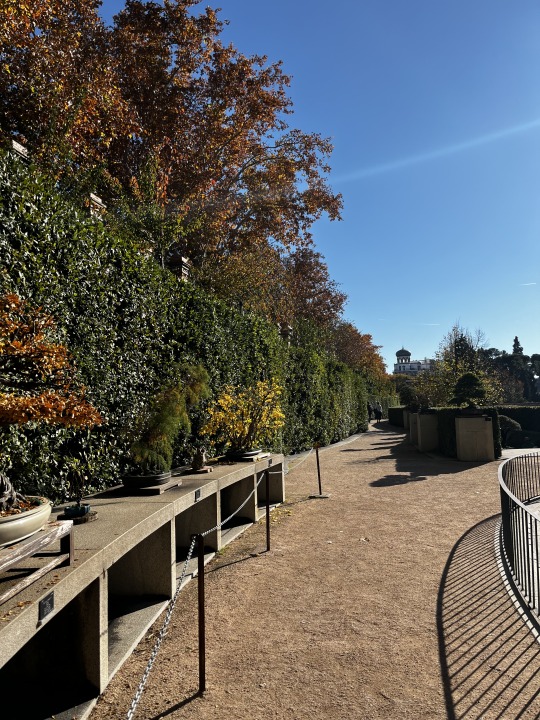


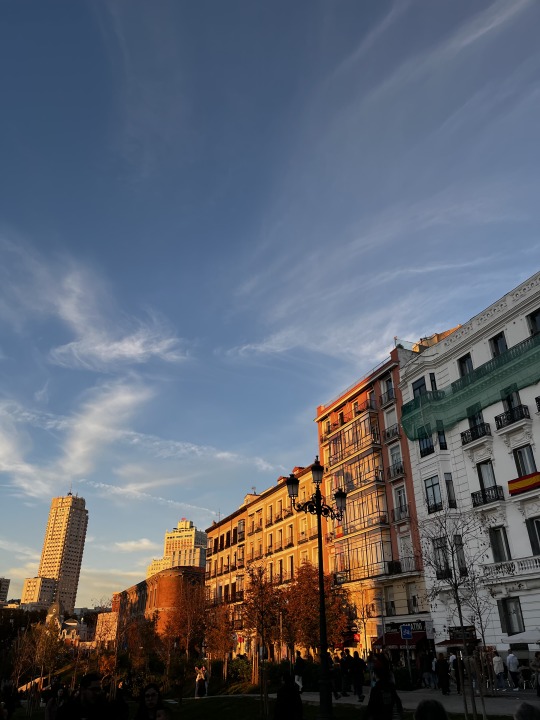

Visited November 17th to November 20th, 2023
Madrid is the capital of Spain and visiting the capital could not be missed! The first historical record of Madrid dates back to the year 865. This area is on the central plain of the Iberian Peninsula. It was about a two-and-a-half-hour train ride from Seville. It was originally named Mayrit. The present location of Madrid was established in 1803 by King Alfonso I. Madrid is known as one of the most dynamic and progressive of Europe’s cities. One of the first Flamenco tablos also resides in Madrid. While there we visited Parque de El Retiro, the glass palace, the Prado and the famous city center. The city was very lively and reminded me of New York In some sense. The architecture was amazing to look at and reminded me of elegant old-time construction. Madrid’s world-famous La Chocloteria was visited and the churros and chocolate lived up to their name. On every street, there is some form of art or performance. The city entertains and also has a range of food and wines to eat and enjoy. The Prado showcases many different artists and art and is huge. I also saw the sunset over the city from a viewing point and many people were doing picnics or snapping pictures. The city felt very welcoming and the park was showcasing fall in Madrid with beautiful changing leaves and green grass. The food also was good and many options for any cuisine. The area we stayed in was more off the beaten path and we were in a little suburb with lots of activity going on. Our host was a local and she was able to provide us with history and places to eat and see. Overall the trip was wonderful and exciting to finally see the capital. The photos were taken by either me or Laura Josler and from November 17th to November 20th, 2023.
0 notes
Photo
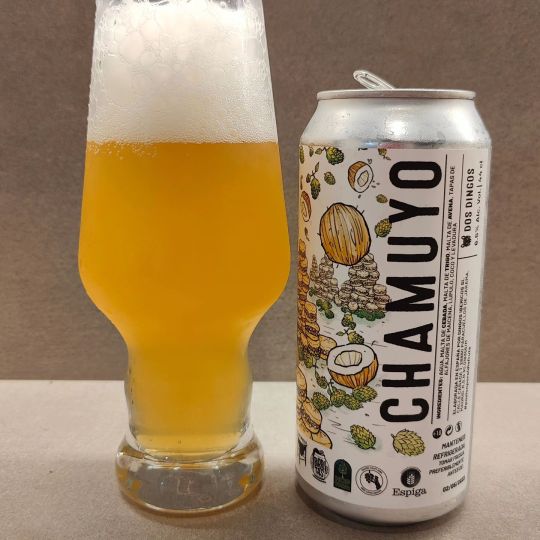
Cerveza Chamuyo de Dos Dingos, una doble IPA con alfajores y coco. Una colaboración con The Beer Trekker, Juguetes Perdidos, Kosmonauta Brewing, Taproom, Gluck, LupuloRex, Birritas en Latita, The Queen Ale, Terranova, Autenti Craft, Mayrit, HopTown, Sol de Gracia y Beerhouse. Con lúpulos TDH El Dorado, Citra, Idaho 7, Idaho Gem y el añadido de Tapas de Alfajores de maicena y Coco. Cervezón con un intenso aroma a coco, casi a piña colada, sedosa, amargor medio. País: España 🇪🇦 Madrid Estilo: Doble Neipa Alc: 6.5 % #retobeer #cerveza #cervezaartesanal #cervezas #birra #beer #beerlover #beerstagram #beertime #cerveja #bier #cervesetatime #bier #biere #starköl #pivo #cervezaartesana #cervesa #ipa #ipalover #øl #ipafan #ipabirra #spanishcraftbeer #craft #craftbeer #ipaporn — view on Instagram https://ift.tt/TzwFMK1
0 notes
Text
Mayrit Bienal presenta su tema para 2024: Sueños Húmedos
La próxima edición de la bienal de diseño de la ciudad de Madrid, Mayrit Bienal, tendrá lugar en mayo de 2024 y su marco teórico ha sido desarrollado por Marina Otero Verzier. Bajo el título “Sueños Húmedos / Wet Dreams”, la bienal propone una metodología de diseño en sintonía con los retos ecológicos y sociales contemporáneos: el disoñar, un neologismo que fusiona “diseño” y “sueño”.
Desde…

View On WordPress
0 notes
Text
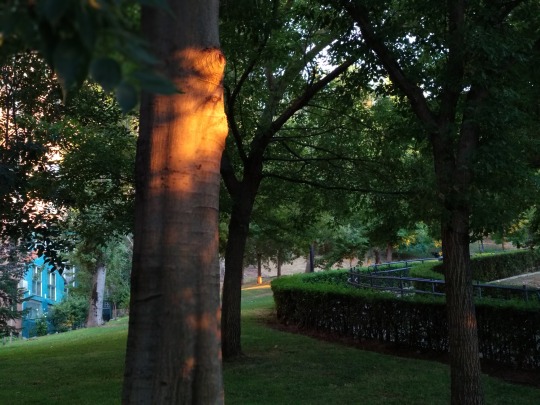
Esto que está encendío y a cinco minutos de la muralla árabe es el tronco de un almez. Almez, al-máys, significaba «el árbol». Madrid, mayrit, podría significar «abundancia de agua». Esto está, de hecho, en el barranco de la calle Segovia, antiguo cauce del arroyo de San Pedro al que tal vez aludía la palabra mayra, traducción del latín matrice, «madre de aguas». Todo empezó con una fuente.
0 notes
Note
El mapa ese está mal, por lo menos respecto a León. Esta de color verde claro cuando el nombre es Romano, proviene de la séptima legión. De legión se llegó a León (no tiene nada que ver con el animal que no sabría decirte de dónde viene el nombre del animal, la verdad).
Sí, una vez me fijé más con detalle en el mapa vi que había varios fallos, los dejo aquí abajo (pongo en los que me he fijado, no sé si hay más):
I’m gonna write it in English so everyone can see the mistakes in that map (at least the ones I found):
As you say, León comes from the Latin legio (the animal comes from the Greek λέον!)
Just as León, there’s no way that Salamanca’s name comes from Iberian, basically because there weren’t any Iberians there, only Celts, so, if the name is autochtonous, it must be Celtic.
Cádiz comes from the Phoenician Gadir, not from latin.
Huelva’s ancient name, Onuba, was autochtonous, so it’s probably Tartessic or Turdetan.
Although it’s generally accepted that Madrid comes from the Arabic Mayrit, there are evidences of a small Roman mansio in the area called Matritum. But that’s just nickpicking, until Arabic times it wasn’t even a town.
As @langsandlit pointed out, Valencia comes from the Roman Valentia, it’s the same name. It’s true there was a previous settlement in the area, but it was called Edeta, nothing to do with the modern name. I looked up what happened with Castellón, cause I don’t know anything about that, and it aparently has an Iberic origin, so that one’s correct.
I wasn’t really sure about the Roman origin for the Balearic Islands because of how many Punic and Greek contacts it had, so I looked it up, and it comes from Phoenician!
I also looked up La Rioja cause I wasn’t so sure about it having a Roman origin and yeah, it comes from Basque.
Those were all I could see, but there could be more. It wasn’t a really accurate map after all lol.
2 notes
·
View notes
Text
Los gatos de Madriz
¿Qué quiere decir un gato/a cuando dice miau? ¿Si dice mahou quiere cerveza? ¿Marramiau significa cabreo? A los madrileños les gusta llamarse gatos debido a una leyenda. Durante la reconquista, Alfonso VI quería tomar un enclave musulmán llamado Mayrit que estaba fuertemente amurallado. Un joven soldado logró escalar la muralla usando dagas que clavaba entre las piedras. Desde la cima tiró una soga para que subieran otros soldados, posibilitando la toma de Mayrit por parte de las tropas cristianas. A este soldado se le llamó "gato", y sus descendientes adoptaron ese nombre como apellido. Los Gato desempeñaron cargos honoríficos durante generaciones.
Hola, me llamo Jan y llevo viviendo en la zona de Madrid desde hace muchos años. A mí no se me consideraría gato al no haber nacido en Madrid. En sentido estricto, solo se consideran gatos a los ciudadanos cuya familia haya vivido al menos tres generaciones en la ciudad.
En la región Madrid se habla un conjunto de variedades dialectales del castellano, con lo que el acento no es tan marcado como el gallego, el catalán o el andaluz. Muchos madrileños dirían incluso que en Madriz no hay acento especial aparte de cuatro palabrejas, pero nos puede sorprender la cantidad de particularidades, palabras propias e incorrecciones que puede contener el castellano de Madrid. Este blog intentará reunir muchas de ellas.
4 notes
·
View notes
Photo

Hoy, #DíadelaTierra, #AulasEnLosParques con el colegio Mayrit Escuela Activa en #Montegancedo, #Pozuelo de Alarcón, #Madrid.
0 notes
Text
The book poll ended, first of all, thank you for voting @isadomna @asongofstarkandtargaryen @jackredfieldwasmyjacob @queenmiriamele @mortalsilence and the other people who particiated!
In total, there are 15 votes and these are 6 books that I'll be sharing during the following weeks/months:
• AL-ANDALUS. Personajes históricos (Al Andalus. Historical figures) 26, 7% - 4 votes
• Toledo: La ciudad de los muertos (Toledo: The city of the dead) 26,7% - 4 votes
• AL-ANDALUS. Ocho siglos de civilización musulmana que marcaron la historia y la cultura de España (AL ANDALUS. Eight centuries of Muslim civilization that marked the history and culture of Spain) 20% - 3 votes
• España medieval : el origen de las ciudades (Medieval Spain: the origin of the cities) 13, 3% - 2 votes
• Valle-Inclán y el insólito caso del hombre con rayos x en los ojos (Valle-Inclán and the unusual case of the man with x-rays in his eyes) 6,7% - 1 vote
• De Mayrit a Madrid: Madrid y los árabes del siglo IX al siglo XXI (From Mayrit to Madrid: Madrid and the Arabs from the 9th century to the 21st century) 6,7% - 1 vote
The other 6 options that are left didn't receive any votes but I'll include them in another poll with some other books.
I'll try to share at least the corresponding parte of a book once a week.
As I had mentioned, for the book Toledo: La ciudad de los muertos, I had already shared the first pages:
#bookblr#historyblr#history books#spanish history#al andalus#sefarad#al andalus. personajes históricos#toledo la ciudad de los muertos#al-andalus. ocho siglos de civilización musulmana que marcaron la historia y la cultura de españa#españa medieval : el origen de las ciudades#valle-Inclán y el insólito caso del hombre con rayos x en los ojos#de mayrit a madrid: madrid y los árabes del siglo IX al siglo XXI#al andalus. historical figures#toledo city of the dead#al andalus. eight centuries of muslim civilization that marked the history and culture of spain#medieval spain: the origin of the cities#valle-inclán and the unusual case of the man with x-rays in his eyes#from mayrit to madrid: madrid and the arabs from the 9th century to the 21st century#history
4 notes
·
View notes
Text
給貪心的人:一次擁有 Loewe 無性別香水系列 Un Paseo por Madrid 最誘人的選擇!

Loewe 的香氛產品早已不是第一次主打無性別,無論是去年推出的 Eau De Cologne、今年的香氛蠟燭,還有與合作夥伴 Paula’s Ibiza 聯乘的夏季香水,拿掉了性別的既定印象之後,反倒以中性的氣質同時吸引了他和她,不過 Loewe 最經典的 Unisex Collection,又怎麼能少提「Un Paseo por Madrid 」系列呢?

不同於單支的香水,Un Paseo por Madrid 以品牌的誕生地西班牙 Madrid 作為靈感,將這個充滿魅力的城市結合當地文化,從一開始祭出的 5 種到現在已經有 8 種香味,包括了:Amanece la bella Cibeles、Descubriendo Colón、Tardes de domingo en el Hipódromo、Ópera en el Teatro Real、El cielo sobre la Plaza de Oriente、De la mano por la Rosaleda、Mayrit、Primavera en el mercado de San Miguel,一如品牌簡單清新的風格打造瓶身,對於選擇困難症的人來說,絕對不知道該從何下手,Discovery Set 可能會是最好的解答。

Loewe 替 Un Paseo por Madrid 推出的 Discovery Set,一盒收進了系列中全部 8 款香氛,以 10ml 的小瓶分裝,除了可以讓貪心的人一次擁有全部香味之外,好攜帶的大小也是隨身、旅行的最佳選擇,目前在官方網站上訂購還會再送兩個試用品,售價為 140 歐元,有興趣的朋友不妨可以點此選購。



延伸閱讀:
>一推出立即引起大家好奇!Jo Malone London 首個混香系列雙色漸層蠟燭
>Loewe 推出 Paula’s Ibiza 香水,最適合瀟灑不羈的女生!
>未開賣便引熱議,日本不二家這兩支 Peko 棒棒糖不是糖果?
>Tom Ford 推出了一款粉紅色的香水 Rose Prick!完美引爆少女心
Follow us on Facebook: fb.com/POPBEE
Follow us on Instagram: Instagram.com/POPBEE
0 notes
Photo

Del 10 al 20 de febrero tendrá lugar Mayrit, un festival de diseño que tiene conexiones con el mundo del arte y la arquitectura. Un evento que propone usar la herramienta del diseño para generar un tejido cultural en la capital y a la vez en todo el país. Exposiciones, acciones, charlas y workshops reflexionan sobre el nuevo papel del diseño contemporáneo. Un festival que nace este año y que es un complemento a Madrid Design Festival.
https://www.mayrit.org/
0 notes
Link
Del 10 al 20 de febrero tendrá lugar
Mayrit, un festival de diseño que tiene conexiones con el mundo del arte y la arquitectura. Un evento que propone usar la herramienta del diseño para generar un tejido cultural en la capital y a la vez en todo el país. Exposiciones, acciones, charlas y workshops reflexionan sobre el nuevo papel del diseño contemporáneo. Un festival que nace este año y que es un complemento a Madrid Design Festival...
https://www.neo2.com/mayrit-festival-madrid/
https://elpais.com/ccaa/2020/02/07/madrid/1581101446_114922.html
https://www.domusweb.it/en/design/gallery/2020/02/29/mayrit-the-new-emerging-network-of-madrid-designers.html
https://instagram.com/panoramah.encounters?igshid=18fxmaqt6pz1h
Jorge Panadès
COL·LECCIÓ NÒMADA
https://oficinapenades.com/projects/nomadic-collection/
Madrid Design Festival
Celebramos la capacidad transformadora del diseño. De Madrid al mundo. Próxima edición febrero 2020. #RediseñarElMundo #MDF20
www.madriddesignfestival.com
https://madriddesignfestival.com/madriddesignpro-programa/
https://madriddesignfestival.com/exposiciones/
https://madriddesignfestival.com/instalaciones-publicas/
https://madriddesignfestival.com/festival-off/programacion/
0 notes
Photo

#Repost @mayritacompas #makingof ・・・ Así comenzamos el tercer día de grabación con el maestro @rafaelriquenioficial en el Parque el Capricho 🎬 🎥 Corto "Mayrit a Compás" 🎞️ . . . #escuelaellucero #flamenco #carmenlatalegona #guitarrista #maestro #rafaelriqueni #miembrodeljurado #rafaelriquenimayritacompas #juradomayritacompas #madrid #españa #mayritacompas #certamenmaytitacompas #logotipomayrit #certameninternacional https://www.instagram.com/p/B7BG0hyq0wB/?igshid=19mco4p4ia9o4
#repost#makingof#escuelaellucero#flamenco#carmenlatalegona#guitarrista#maestro#rafaelriqueni#miembrodeljurado#rafaelriquenimayritacompas#juradomayritacompas#madrid#españa#mayritacompas#certamenmaytitacompas#logotipomayrit#certameninternacional
0 notes
Photo

.
June arrives in Madrid with heat, new residents and projects.
From early June to mid-July, we welcome in residence Evelina Emir - Ali, an Ukrainian artist who is an Artists at Risk (AR) - grant recipient at hablarenarte / Planta Alta as well as the second beneficiary of support from the Spanish-based TEJA. Cultural Spaces Network in Support of Emergency Situations.
TEJA is a solidarity response from the artistic and cultural sector to the current emergency unleashed by the Russian invasion of Ukraine. Since March, the independent organizations, public and private institutions that make up this Network began to welcome different creators and cultural professionals affected by the war, offering artistic residences, accommodation, and advice.
In mid-June we also welcome the Swedish Girls (Stockholm), a design and art collective, which is participating with an installation at Mayrit: Biennale of Architecture and Design.
And to end the month, Planta Alta participates in Vivaces, the 1st Meeting of the Platform of Independent Spaces for Contemporary Creation in Madrid, which is held in the Auditorium of Sala Alcalá 31.
------------------------
.
Llega junio a Madrid y con este, el calor, nuevos residentes y proyectos.
Desde principios de este mes acogemos a Evelina Emir - Ali, artista ucraniana, beneficiaria de una beca de Artists at Risk (AR) en hablarenarte / Planta Alta y segunda residente en el marco de TEJA, Red de Espacios Culturales en Apoyo a Situaciones de Emergencia.
TEJA es una respuesta solidaria del sector artístico y cultural ante la emergencia actual desatada por la invasión rusa de Ucrania. Desde marzo, las organizaciones independientes, instituciones públicas y privadas que conforman esta Red (incluida hablarenarte / Planta Alta ) empezamos a acoger a distintxs creadorxs y profesionales de la cultura afectadxs por el conflicto bélico ofreciendoles residencias artísticas, alojamiento y acompañamiento.
También este mes alojamos a Swedish Girls (Estocolmo), colectivo de diseño y arte, que participan con una instalación en Mayrit: Bienal de Arquitectura y Diseño.
Y para terminar junio, desde Planta Alta participamos en Vivaces, el I Encuentro de la Plataforma de Espacios Independientes de Creación Contemporánea de Madrid, que se celebra en el Salón de Actos de la Sala Alcalá 31.
0 notes
Video
A los nacidos en Madrid se les llama “gatos”. Según es este término se debe a un soldado de las tropas de Alfonso VI que, en 1083, estaban intentando conquistar Mayrit (la ciudadela árabe donde luego nació Madrid). De repente el ágil soldado comenzó a trepar la muralla y el rey le miró asombrado diciendo que “se parece a un gato”. ¿Cómo acabó la historia? Pues,reconquistaron la ciudad. •••••••••••••••••••••••••••••••••• 📹 by @miguelyabeta •••••••••••••••••••••••••••••••••• Like, comment and share! •••••••••••••••••••••••••••••••••• Follow me on YouTube, Facebook and Twitter. ••••••••••••••••••••••••••••••••••• #madrid #spain #travel #españa #europe #architecture #trip #travelblogger #alldaytravel #amoviajar #aroundtheworldpix #awesome_earth #awesome_earthpix #awesome_globepix #awesomeearth #backpackers #backpacking #be_one_city #beautifuldestinations #beautifuldestinations #bestintravel #bestplacestogo #bestvacations #bucketlist #cities #city (en Madrid, Spain) https://www.instagram.com/p/CCmVNRuCESO/?igshid=1mqqar3hol79o
#madrid#spain#travel#españa#europe#architecture#trip#travelblogger#alldaytravel#amoviajar#aroundtheworldpix#awesome_earth#awesome_earthpix#awesome_globepix#awesomeearth#backpackers#backpacking#be_one_city#beautifuldestinations#bestintravel#bestplacestogo#bestvacations#bucketlist#cities#city
0 notes
Text
Al-Andalus o los ocho siglos de historia mutilada de España
Andalucía aprueba por unanimidad la candidatura de Medina Azahara como patrimonio mundial de la Unesco
ÁNGELES LUCASTwitterSevilla 20 NOV 2017 - 21:06 CET
“Antonio Manuel ejemplifica con innumerables casos lo que considera una “mutilación” del pasado y la necesidad de reconstruir la memoria con un rastro de huellas “apabullante”. “En Madrid (Mayrit), tienen a la Almudena (Al Mudayna), y a su patrón San Isidro (Al Issidri); en el norte de Huesca está Almudévar; o uno de los apellidos más comunes de Galicia es Mouro, Moura o Mouriño, que está diciendo moro”, asegura el también escritor, quien apunta que Felipe V se considera español siendo francés y en cambio se niega la españolidad a Abderraman III “que es hispano de los pies a la cabeza”. Se cuestionan así las certezas académicas a las que añade una represión religiosa, política, social y cultural desde un “norte de reinos sin ciudades hacia un sur de ciudades sin reinos”. “Traen a extranjeros, belgas, franceses o alemanes y se les entregan las tierras para que las ocupen condenando a los que estaban ya aquí a ser nadie”, concluye.
La fundación pública andaluza Legado Andalusí lleva más de 20 años promoviendo el ámbito cultural y turístico del periodo histórico. “Queremos que se visualice por nuestras raíces, por nuestros valores, por ser fruto del mestizaje de España y Andalucía”, señala Marina Martín, presidenta de la entidad, que considera que hay estos años más interés por rescatar la historia que hace dos décadas. “Antes no se le daba el valor que hoy tiene. Ahora está de moda y el turismo cultural lo quiere conocer y con ello se fomenta también la investigación y la divulgación, que es fundamental”, señala la presidenta de entidad, que promueve publicaciones, exposiciones y una ruta que recorre más de 280 localidades andaluzas y cuenta con la certificación de Itinerario Cultural Europeo del Consejo de Europa.

Armesto comenzó a replantearse su pasado como andaluz al ver, precisamente, en Barcelona, una estatua de Averroes; un filósofo andalusí nacido en Córdoba reflejado en la obra La escuela de Atenas, de Rafael. Se preguntó cómo era posible que apenas tuviera referencias de al-Andalus. “Seguro que hubo conflictos, pero no los suficientes para que no hubiera una convivencia. Había la empatía en lo que se ve, sin idealizar, como una sociedad ejemplar, de esplendor, iluminación y contemplación.
https://elpais.com/cultura/2017/11/20/actualidad/1511191464_689952.html
0 notes